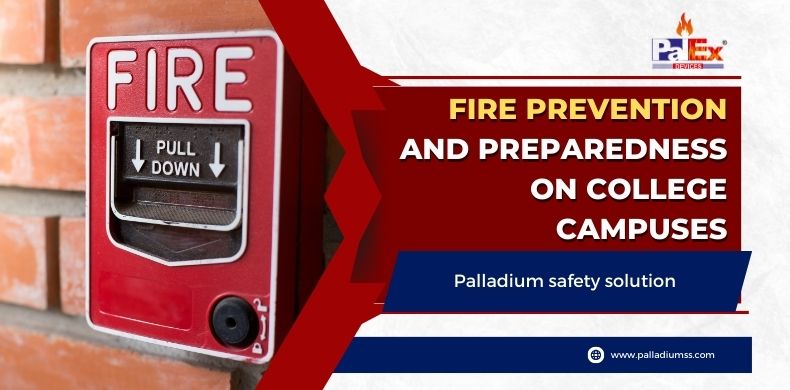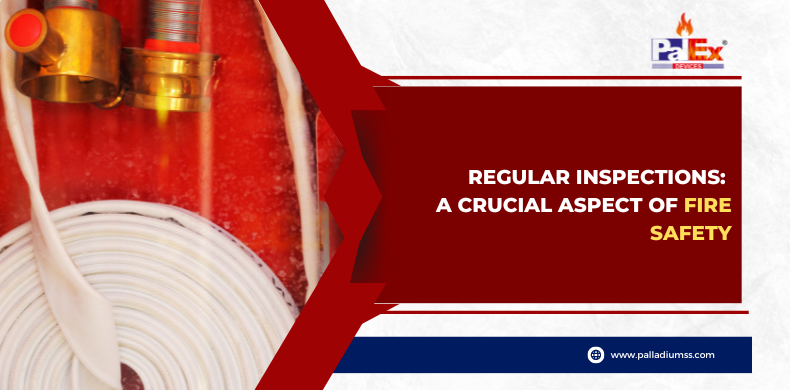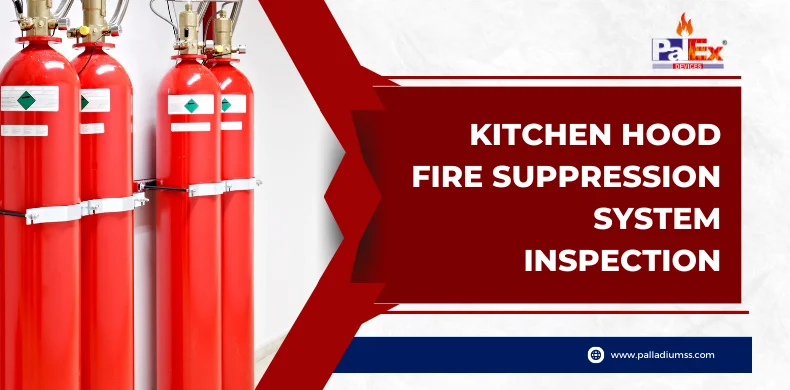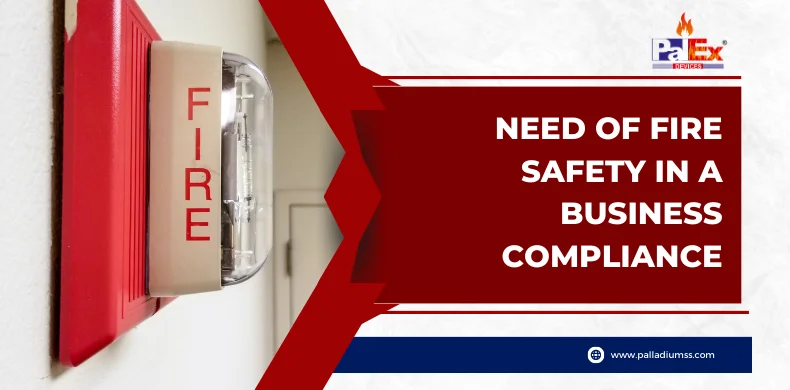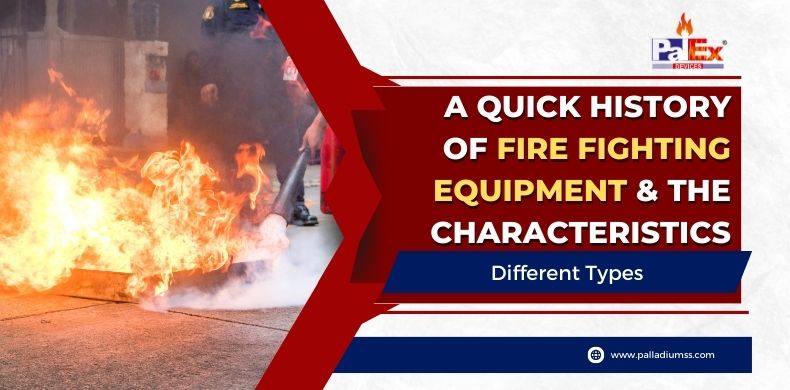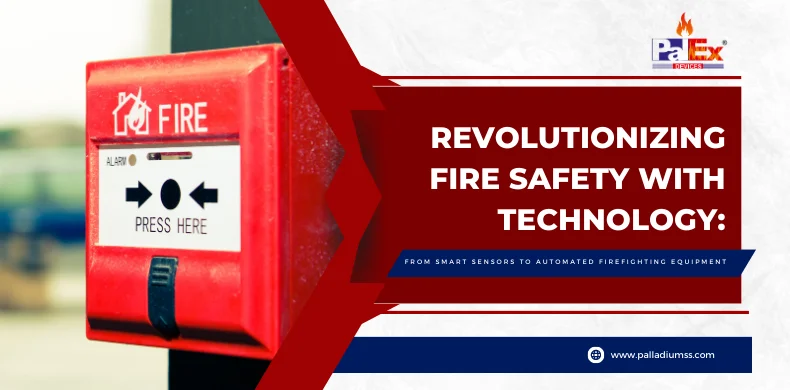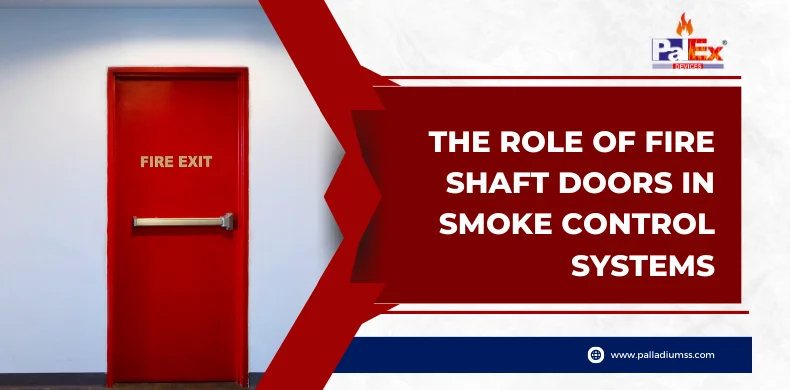This blog has discussed various reasons why property managers should hire, install equipment, and work with professional fire protection companies like Palladium Safety Solutions on their property.
Fire Protection Companies are Experts in their Field
When it comes to fire safety, you want to ensure that you’re working with a company that knows what they’re doing. Fire protection companies are experts in their field and can help you choose the right fire safety equipment for your home or business. They can also help you create a fire safety plan to keep your family safe in the event of a fire.
Fire Protection Companies can Help you Save Money
Installing fire safety equipment in your home or business can be costly. However, working with a fire protection company can help you save money. Fire protection companies often offer discounts on their products and services and can also help you save money on your fire safety plan.
Fire Protection Companies Offer Peace of Mind
When you work with a fire protection company, you can rest assured that your family is safe in the event of a fire. Fire protection companies offer a variety of services that can help you protect your home and family from fire. You can also feel confident that your property complies with fire codes and that your fire safety plan is up to date.
Fire Protection Companies Can Help You Get Started
If you’re unsure where to start regarding fire safety, a fire protection company can help you get started. They can help you choose the right fire safety equipment for your home or business and can help you create a fire safety plan. Once you have the basics in place, you can start working on more advanced fire safety concepts.
Protect Various Diverse Industries
Fire protection companies don’t just work with homeowners. They protect various other industries like schools, healthcare facilities, prisons, factories, and many others.
Fire Protection is an Investment
Although the upfront cost of working with a fire protection company can be expensive, it’s important to remember that fire safety is an investment. By installing the proper fire safety equipment and creating a fire safety plan, you’re protecting your home or business from a potentially disastrous event.Also read :Fire Partners of Evil
Conclusion
Fire protection is a serious matter and should not be taken lightly. For peace of mind and a sense of satisfaction, Property managers should consider hiring, installing equipment, and working with professional fire protection companies like Palladium Safety Solutions to ensure the safety of their property, tenants, and employees, and they offer discounts they provide. Working with a fire protection company is an investment that will pay off in the long run.Fire Prevention and Preparedness on College Campuses
Fire misfortune is a national misfortune. There are several fires in dormitories, sororities, fraternities, and off-campus housing that lead to the loss of many lives and property. With diverse activities that happen on a college campus from classes to community events, from living to the gathering, and more, many aspects of fire and life safety need to be addressed.
Also Read: Here Are Some Fire Safety Tips After You’ve Purchased a New Home.
Here are some aspects that every campus should address to safeguard lives and property.
- Fire Alarms: Fire alarms are the most important and essential part of a full fire protection system. Whether you continue with maintenance or installing new fire alarm systems like the 16 zone Fire Alarm Panel, without it you can never think about fire safety.
- Fire Alarm Monitoring: Correct timing is everything in case of any emergency. A good fire alarm monitoring system can give a fast response during an emergency so that precautionary steps can be adopted to minimize the damage.
- Emergency Exit Lighting: During an emergency, emergency exit lighting helps in safeguarding people to escape from the building.
- Fire Extinguishers: Installing and maintaining fire extinguishers is not enough, train the employees and students on how to use them so that they can use them in case of any emergency. Install from a reputed fire extinguisher manufacturer.
- Fire Sprinklers: Fire sprinklers are the best fire suppression system. They restrict the fire to spread and can easily control small fires. Different types of sprinklers can be used particular places.
- Kitchen fire suppression: Following safety codes and installing proper fire prevention and suppression systems in cafeterias, Mess, and other commercial kitchens on the campus help to protect fire incidents.
- Special Hazard system: Some places on campus require additional safety and security like a server room, science labs, library, museum or quality artifacts, academics section, and others. These places require more water sprinklers, fire extinguishers, and fire alarms and they should be maintained properly. So to protect these assets of the campus, special hazard systems need to be installed.
- Design and practice evacuation plans: Evacuation practices can help save lives although it may seem unnecessary to busy staff and students at first. The action plan that is required to have:
- A method for reporting fires.
- An evacuation policy and procedure.
- Routes assignments and Escape procedures, such as floor plans, workplace maps.
- Names, titles, departments, and telephone numbers of individuals both within and outside your campus to contact for additional information or explanation of duties and responsibilities under the emergency plan.
- Procedures for employees who remain to extinguish fires or perform other essential services.
- Rescue and medical duties must be assigned to special workers.
- Creating fire drills will properly prepare staff and students for any emergency
Regular Inspections: A Crucial Aspect of Fire Safety
Fire safety is something that no one should take lightly. Fires can happen anytime, anywhere – even in places we consider safe, like offices or schools. While active fire protection systems like alarms and sprinklers are meant to contain fires when they do occur, nothing beats preventing fires in the first place through diligent fire safety inspections.
Regular and thorough fire safety inspections by qualified professionals are a crucial aspect of any fire protection program. They help minimize, if not eliminate, potential fire hazards. Inspections ensure that existing fire protection systems and equipment are up to code and in proper working order. They also help in getting violations or problems noted and corrected well before a fire breaks out, thereby upholding the safety of people and property.
Simply put, fire inspections save lives. They deter fires and enable quicker and safer evacuation when fires do happen despite all precautions. In that sense, regular fire safety inspections are the bedrock of fire security in any premises.
Why Fire Safety Inspections Matter?
The purpose of fire inspections is to identify the various existing and/or potential fire and life safety hazards in a premises so that prompt corrective measures can be undertaken before the hazards lead to a disaster.
Inspections help uncover deficiencies (missing or inaccessible fire equipment like alarms, exhaust hoods, and fire extinguishers) as well as detect issues that could compromise the functioning of fire protection infrastructure. These could be anything from expired fire extinguishers, inoperative smoke alarms, blocked fire escapes, and non-compliant electrical wiring to the absence of trained safety wardens. Some premises may not even have a physical infrastructure or evacuation plan that supports safe and quick escape in case of fire. Regular fire safety inspections help uncover such discrepancies that undermine fire protection.
In addition, inspections ascertain that all fire safety regulations mandated by local authorities are being followed. This ensures that the premises stay in active regulatory compliance. It should not come as a surprise that premises with prior reported fire safety violations or discrepancies are more prone to fires compared to others. In fact, statistics show that fires in buildings that had been inspected in the past year resulted in considerably less damage compared to blazes in non-inspected properties.
Scope of Fire Safety Inspections
Comprehensive fire inspections scrutinize all fire prevention and mitigation aspects of a building’s premises. Some of the key areas covered in a typical fire inspection are:
- Emergency preparedness – This covers the evacuation plan, signage and accessibility of exits, the presence of appropriate firefighting equipment, and whether fire drills are conducted regularly.
- Electrical safety – Points of inspection include wiring, overloading of circuits and electrical panels, use of extension cords, etc. Improper wiring or overloading electrical circuits is a prime cause of fires.
- Flammable storage and housekeeping – Inspects if flammable materials like chemicals and gases are safely stored to prevent accidental fire. Also, note if there are combustible waste materials lying around that could fuel a blaze through spontaneous ignition.
- Commercial cooking areas – Scrutinizes commercial kitchens and cooking areas since cooking equipment like deep fryers, stovetops, and ovens often cause fires if left unattended or uncleaned. Checks for fire-suppressing appliances over cooking areas.
- Fire protection systems – Checks for defects or maintenance issues with fire extinguishers, fire alarms and detection equipment, standpipe systems, automatic sprinklers, and other water-based fire suppression systems, etc. Each system has specific inspection and maintenance protocols to be followed.
Fire safety requirements differ across various premises. So, the specific inspection criteria also accordingly vary for offices, schools, factories, warehouses, hospitals, laboratories, hotels, theaters, and so on. But all inspections include general and area-specific scrutiny of fire hazards and protection systems alike.
Conducting Fire Safety Inspections
Fire inspections may be undertaken by the fire department, an external licensed inspector, or internally by members of a designated fire response team. In some countries and states, the law requires all public buildings and commercial businesses to undergo periodic fire inspections.
Fire departments usually initiate external inspections once or twice a year in all commercial premises under their administrative jurisdiction. In some places, businesses also reach out to licensed private contractors to inspect their premises periodically to maintain compliance. Companies ‘ internal fire prevention teams also conduct their own routine inspections to monitor risks in different areas, enforce fire codes and operational discipline among employees, and report potential issues to senior management. Whoever conducts the inspection should have the necessary certifications and domain experience.
Also read : Here Are Some Fire Safety Tips After You’ve Purchased a New Home.
Promoting a Culture of Self-Compliance
Beyond just following external recommendations and local fire codes, organizations must proactively motivate their employees to consistently self-inspect their office spaces, workstations, and equipment for any fire risks. Creating a positive safety culture is indispensable for minimizing fire hazards.
Bottom Line
Regular fire safety inspections are thus an integral part of fire preparedness. They help plug the vulnerabilities, upgrade infrastructure, and streamline emergency response to effectively preempt fire incidents and ensure rapid and safe evacuation during fires. Therefore, never underestimate the importance of a comprehensive and periodic fire safety inspection regime – it could make all the difference between escape and disaster someday.
Kitchen Hood Fire Suppression System Inspection
But the problem is over time; the commercial kitchen can catch up with grease and grime and present new problems to the kitchen hood fire suppression system. Grease and grime stick to the nozzles and disperse your fire suppression agent, and thus it disables the system’s ability to suppress and extinguish the kitchen fires. And this may cause serious fire accidents. So it is important to maintain your kitchen’s fire suppression system.
How Often Should the Kitchen Hood Fire Suppression System be Inspected?
According to NFPA 96, the kitchen hood fire suppression system inspection must be done every six months. And importantly, the inspection must be done by a licensed fire protection company. The inspector who does the inspection checks the following, Whether There was a fire in your kitchen, and your fire suppression system works properly, i.e., activates and puts off fire successfully when shutting off the gas or electricity that powers your equipment.What is Done in the Kitchen Hood Fire Suppression System Inspection?
First, the inspector will check whether the fire suppression system is working as expected and replace any faulty or old parts. Some common tasks that the inspector does are:- All the extinguishing agent nozzles would be discharged and inspected
- Replace the nozzle caps
- Extinguisher lines are blown out through the air to ensure that there is no blockage.
- Test the gas shut off valve
- Check for holes in hoods
- Manual alarm pull station is checked for its functioning
- Fusible links of the system are cut to if the system starts properly
- The gas and electrical shut off is checked when the system activates
- Ensure the proper working of the cartridge
- Once the kitchen hood suppression system is activated, the inspector will replace the fusible links with new ones with the date stamped on them so that it would serve as proof of service for fire marshal inspection.
- After complete checking, the inspector will tag the system showing certification was successfully completed by a professional
- Finally, you will get a commercial cooking system service and inspection report, and it will be sent to your local fire department.
Also read :Benefits of Installing Fire Sprinklers in Residential and Commercial Buildings
How Should You Prepare Your Kitchen Before the Kitchen Hood Fire Suppression System?
If the kitchen hood fire suppression system has been scheduled, then you need to do the following:- Thoroughly clean your kitchen hood
- Know when the inspection will start
- Prepare the kitchen for the inspection
Need of Fire Safety in a Business Compliance
Fire safety is of paramount importance in any building. As a business owner, you are responsible for ensuring that your workplace meets all required health and safety standards. Your work environment must comply with all building regulations to ensure the safety of your employees and the protection of your building.
Fire safety should always be a major concern, no matter what type of business you run or the number of people working. Failure to do so may give your employees the wrong message, as it reflects them that their well-being at work is not always considered, and in some cases, can have disastrous effects in the event of an office fire.
A fire risk assessment should always be carried out by the responsible person with a written record of it if the company employs five or more people. To perform a fire assessment
The following steps must be taken:
- Identification of Potential Fire Hazards – Note anything that could easily cause a fire or combustion, if found during the assessment.
- Identification of People at Risk – Find out if the risk can be higher for some people (i.e., the disabled and the elderly are particularly at risk).
- Act on Results – Assess, reduce or eliminate potential risks.
- Record – Keep a record of results, prepare a contingency plan, and provide fire safety training.
- Review – A fire risk assessment should be carried out regularly with all results, updated, and recorded.
When you invest in a fire detection system and safety setup for your business, you are investing in people. It improves the health, safety, and well-being of the people associated with you and your company. A safe and healthy work environment is a basic social right. Protecting workers from occupational safety and health risks promotes goodwill besides being human.
Workers have the right to a work environment that suits their professional needs and allows them to prolong their participation in the labor market.In various fire safety audits, your organization’s fire control panel facilities and activities are evaluated. The prevailing risks and the level of prevention, protection, and emergency management preparedness like fire emergency light are also considered. And then you get a recommendation to update your security entries to avoid accidents and reduce consequences.
Also read :Causes of fire at workplace
Final reports recommend more efficient working methods and techniques. This contributes to a better work-life balance.
You can enhance personal safety through good practice and action. Compliance with rules and regulations. All procedures and controls in place. Accidents will never happen or at least there will be a decrease in the number of accidents. It will improve the morale of the employees. Thus, improving productivity will result in the betterment of the profits.
You will get easier insurance if all necessary systems are in place. After a frequent check is done, it will be easier to get fire insurance from several companies. Also, if a remote fire continues, it will be easier to claim compensation for losses.
4 Possible Ways Your Fire Protection System
Installing a fire protection system in your building shows your commitment to security and the safety of the people inside ? residents, coworkers, or employees. These people count on you to have the appropriate systems in place to ensure they stay safe in the event of a fire emergency. Regular inspections of your fire protection system are essential to ensure it meets fire code requirements.
These four common problems with your fire protection system can disrupt or prevent it from working correctly, thereby interfering with its ability to protect your property and people against fire.
Dirty Smoke Detectors in Ductwork
Verify that all smoke detectors installed in your air handling system’s ductwork are cleaned, tested, and working correctly. Large buildings often have extensive air handling systems with smoke detectors installed in ducts and dust systems. These detectors sense smoke from filters, motors, and fans, giving you early warning to take action.
A lot of air passes through an air handling system’s air filters, and the filters fill up fast. They require regular changing due to the rapid build-up of dust and dirt. Your fire protection system can only function when you maintain smoke detectors properly and clean or change air filters in the ductwork as scheduled.
Fire Safety in the Office
How to Prevent EV Fires in Your Business Garage?
Why are Smoke Gases Harmful?
Every type of vehicle faces a similar type of vehicle fire. During the process of combustion, the plastic parts release toxic fumes and high temperatures. These days cars have a lot of plastic installed in them which increases the chances of a great fire than it was twenty years ago. In such cases, it gets difficult for the brigadier to extinguish the fire.Monitor Room Install Extinguishing System
Here, plant fire protection plays a major role. All the major extinguishing services should come in handy when the fire breaks. This will save you both money and time both. Along with it, it will also protect your buildings, business, garage, and assets. Property and garage owners should consider automatic extinguishing systems.Why do Batteries Catch Fire?
It is important to understand the reason why lithium-ion batteries are susceptible to fire. You must have heard people saying that this smartphone, laptop, the tablet has a lithium-ion battery installed in it but the batteries used in the EV are different from them. EV batteries have the potential to save three times more energy than phones or laptops. Along with it, they also have to withstand the abuse of extreme temperature, dust, humidity, and vibrations.Learn more about the Palex 6 zone detection system and how it can help you.
Now, if you want to increase the driving range of a vehicle needing high capacity. Flammable batteries are very vulnerable if the vehicles are being operated within confined spaces.
A Global Issue
Battery related fire is not an issue faced only in India but worldwide. With the rise in demand of the electric vehicle, the number of fire incidents has also risen considerably. The good news is that India’s AIS 156 standards provide protection from these fires. Also, it is up to the manufacturer to adhere to it. They can either side with AIS 048 or 156. 048 were recently updated to include the nail penetration test in full charge. Earlier full charging wasn’t made necessary. Businesses who were already using 048 continue running their business as usual.Water as an Extinguishing Agent
Water is a nice choice when it comes to extinguishing fires and especially while extinguishing electric vehicle fires. Also, a huge of amount is required to cool it down which in turn prevents thermal runaway which occurs when fire inside gets 10 times more aggravated because of sparks and tends to get out of control.
The fire brigade use a different and special equipment to cool down fires in such cases. In the electric cars, the batteries are located in the under body. The frames protect them from damage during the accident. So, sufficient water protects the cars and underground garages.
Also read :Evaluation Factors to Choose the Top Fire Protection Companies
Conclusion
The owners shouldn’t park defective cars of bikes in garages and only original charging cables should be used. The fire risk associated with electric vehicles and combustion vehicles is usually the same. They already have a Fire Safety Equipment installed that pre detects the problem with the hardware and shuts them down.A Quick History of Fire Fighting Equipment & the Characteristics of Different Types
Introduction to the History of Fire Fighting
Fire has been a continuous and ever-present threat to human civilisation. As long as homes and other structures were built of wood and combustible materials, there have been fires. While the threat of fire has been present throughout history, the methods and equipment used to fight fires have changed and evolved significantly. Continue reading “A Quick History of Fire Fighting Equipment & the Characteristics of Different Types”
Revolutionizing Fire Safety with Technology: From Smart Sensors to Automated Firefighting Equipment
New technology has changed the way we keep safe from fires. It helps us protect ourselves and buildings in new and better ways. Some sensors can find fires early on, and special cameras help firefighters see where the heat is so they can plan better. Special drones with devices that can see heat and detect gas are used to check how big fires are and find places that are difficult to get to. Better gear protects better from heat and flames. Robots and machines that fight fires help better and faster. As technology gets better, we will find new ways to stop, notice, and fight fires. This will make fire safety much better for everyone.
Smart Fire Sensors
s>Thermal Imaging Cameras
Firefighters use special cameras to find hot spots in burning buildings. These cameras are called thermal imaging cameras. These cameras take pictures using heat energy and turn them into a picture that people can see. This tool helps firefighters to see in smoky and dark conditions. They can find hidden places that are hot and might cause problems.
Drones
Drones help firefighters see fires from the sky and find dangerous spots and gases. This makes their work better. This tool helps firefighters see how far the fire has gone, find hidden fire, and reach hard-to-reach fire to put it out. It helps make firefighting better.
Advanced Protective Gear
New fabric technology has greatly improved protective clothing. Nowadays, firefighters have better clothes to protect them from high heat and flames than before. These new suits can resist even higher temperatures and give them better protection. This made firefighters safer and better at fighting fires.
Automated Firefighting Equipment
Machines that fight fires are getting better and faster at putting out fires, which helps save more lives and property. Drones and robots to stop fires are being made to go where people can’t, so firefighters can stay safe and do a better job. Soon, these tools will change how firefighters work.
New technology for firefighting is making fires safer. Numerous thoughts are still being created. As the world keeps making modern innovations, we’ll discover better approaches to halt, discover, and battle fires. Numerous thoughts are still being created. As the world keeps making modern innovations, we’ll discover better approaches to halt, discover, and battle fires.
Also read :Common Electrical Panel Problems and How to Solve Them
Conclusion
To sum up, the future of keeping safe from fire is here and it’s really interesting. New machines and tools help us prevent fires and keep everyone more protected. firefighters now possess improved equipment such as intelligent sensors and upgraded firefighting gear that enables them to safeguard individuals and possessions more efficiently. As technology advances, novel methods to avert fires and ensure the safety of individuals and structures will emerge. Fire safety will improve in the future, offering us enhanced protection against fires.
The Role of Fire Shaft Doors in Smoke Control Systems
What are Fire Shaft Doors?
Fire shaft doors stop fire and smoke from moving between floors in significant buildings. These doors help keep fires from spreading in buildings. They also give people more time to leave the building, making the fire less damaging. Fireproof doors are often made of things that can handle fire without getting damaged. In an emergency, you can leave the building using particular doors on the stairs, elevators or other parts that go up and down. They have signs to help people know where they are during an emergency.The Importance of Fire Shaft Doors in Smoke Control Systems
Here are some reasons why fire shaft doors are so crucial in smoke control systems:- Fire shaft doors are essential components of smoke control systems in buildings.
- They are made to stop fire and smoke from moving up or down through building staircases, elevators, and air vents.
- Fire shaft doors are doors that can handle extreme heat and fires. They are usually made of solid materials like steel.
- These doors have particular parts to stop fire and smoke from getting through, even if they are not closed.
- Fire shaft doors keep fire and smoke from spreading throughout a building, which is essential for keeping people safe.
- It’s necessary to check fire doors regularly to ensure they work correctly in a fire.
Design and Functionality of Fire Shaft Doors
Here are some design and functionality features of fire shaft doors:- Fire shaft doors are specialized doors designed to prevent the spread of fire and smoke between floors through vertical shafts.
- Usually, they are constructed using fire-resistant substances such as steel to endure extreme heat and flames for a particular length of time.
- The fire shaft doors have fireproof seals and mechanisms prohibiting smoke and fire from passing through, even when not fully closed.
- These types of doors are commonly installed within the apertures of vertical channels such as staircases, lifts, and other multi-tiered pathways in edifices.
- In a fire outbreak, the fire shaft doors are designed to remain closed, preventing the spread of flames and smoke to other building sections.
- Fire shaft doors may have different ratings based on fire resistance and durability. Some may be designed to provide additional sound insulation and can be customized to fit different architectural styles.
- Regular maintenance and testing of fire shaft doors are essential to ensure their proper function during a fire.
Maintaining Fire Shaft Doors
Fire shaft doors require regular maintenance to ensure proper functionality in a fire emergency. You should conduct regular checks on fire shaft doors to ensure their adequate functionality in case of a fire emergency, on their seals, hinges, locking mechanisms, and any other components that may impact their ability to resist fire and smoke. Prompt repair or replacement of any affected parts is necessary when issues are identified during inspections. Building owners and managers can help prevent the spread of smoke and flames by ensuring the proper maintenance of fire shaft doors, protecting building occupants and reducing the risk of injury or death during a fire emergency.Also read :Why You Should Install Fire-Rated Doors in Your Buildings


